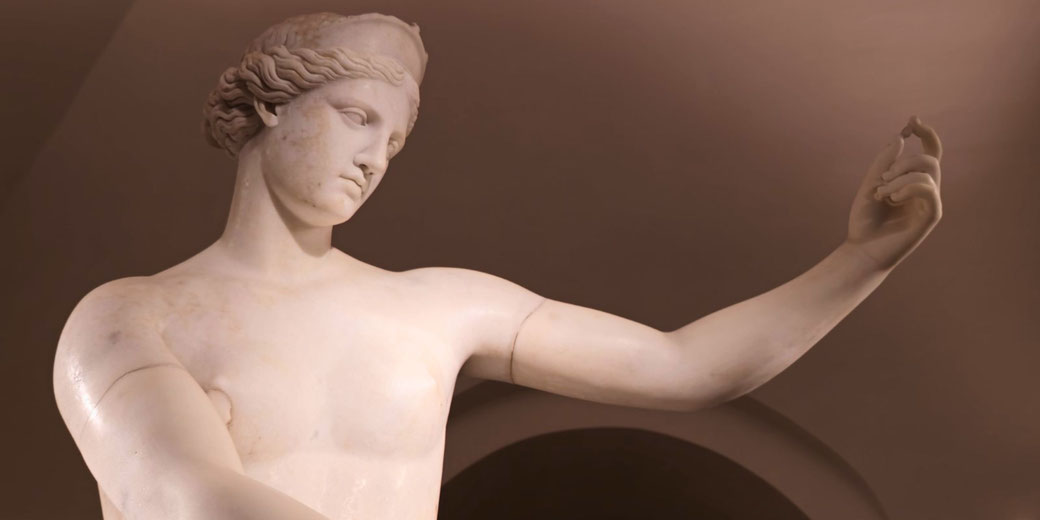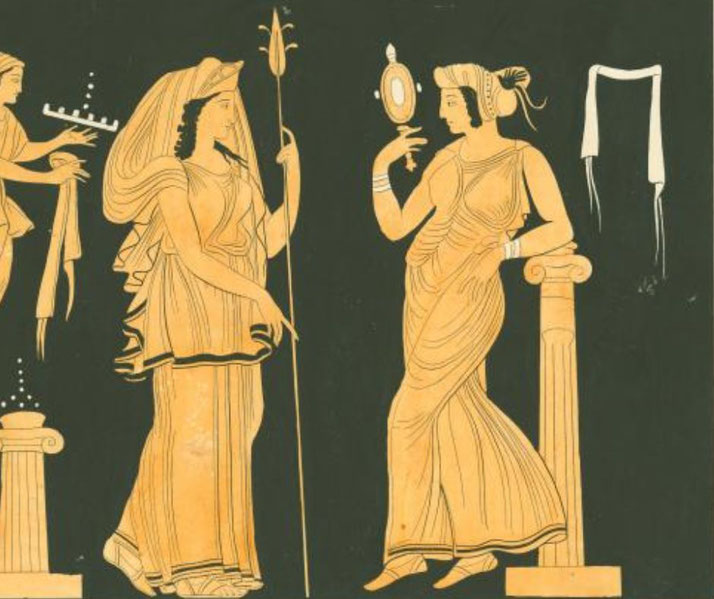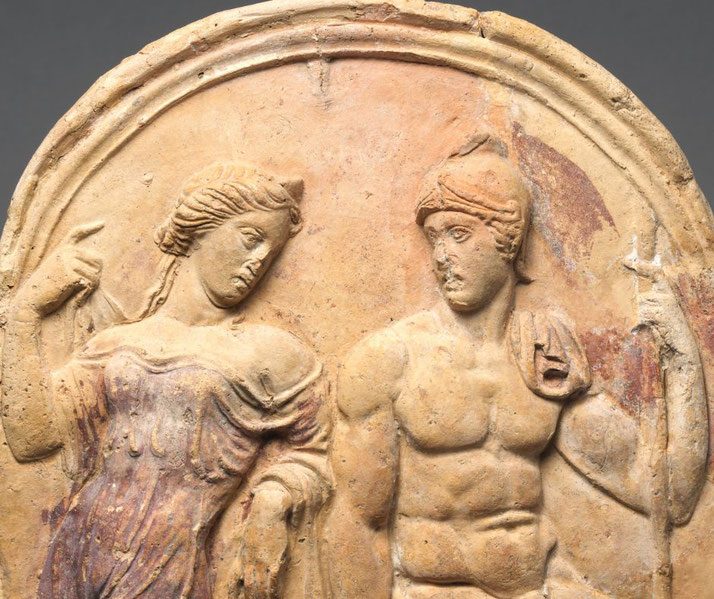Aphrodite: The enchanting Greek goddess of love and beauty

A single look could inspire loyalty, spark conflict, or change the fate of entire empires. Aphrodite had an important role in Greek mythology as a goddess whose beauty had a powerful impact on those around her.
To understand the significance of this, we need to look at how this goddess influenced ancient ideas about love, beauty, and women’s power.
Who was Aphrodite?
To begin with, the name ‘Aphrodite’ came from the word aphrós that means ‘foam,’ which fits one of her most famous origin stories.
As a result, her name could be seen as a lasting reminder of her divine and stormy beginnings.
In Roman mythology, Aphrodite was known as Venus. However, there has been some discussion about the origin of ‘Aphrodite,’ with some saying that her name might come from before the Greek language and have eastern roots, which possibly link to the Phoenician goddess Astarte or the Sumerian goddess Inanna.
The mysterious stories of her birth
The origin of Aphrodite is a matter of soe disagreement in Greek mythology, with two main stories that give different views of her birth.
Both stories reveal different sides of Aphrodite’s character and influence on Greek society.
The first and possibly more dramatic account comes from Hesiod’s Theogony, an ancient epic poem that tells the family history of the gods.
According to Hesiod, Aphrodite was not born of two parents like most other gods; instead, she appeared from the sea foam as a full adult.
This unusual birth, unlike any other Olympian god, says a lot about Aphrodite’s supernatural attraction and power.
In this version, Aphrodite is older than Zeus and most other Olympians.

In contrast, Homer’s Iliad tells a more usual birth story, calling Aphrodite the daughter of Zeus, the king of the gods, and the sea nymph Dione.
In this story, Aphrodite shares her family line with the other Olympians, which ties her more closely to the events of the other gods.
Whether she came from the sea or from Zeus’s family, she was an important and powerful figure in Greek mythology.
Aphrodite's powers
The image of Aphrodite in Greek mythology is as vivid as the stories around her birth and actions, since, as the Goddess of Love and Beauty, she shows physical and symbolic traits that highlight her power and attraction.
Aphrodite’s appearance shows her as a perfect example of female beauty, with flowing golden hair, captivating eyes.
Because of this, artists often depicting her nude or partly nude to show her role as a goddess of physical desire.
Also, artists usually showed her as young and lively, with her divine beauty free from signs of aging.
Her religious symbols and animals
The Goddess of Love and Beauty also has many symbols that relate to her divine role.
For example, the dove is one of her most common symbols. It functioned as her sacred bird and symbolised love and harmony.
Other birds linked to Aphrodite include the sparrow, the goose, and swans, which illustrate her elegance and grace.
She is often linked with certain plants and fruits, such as roses, myrtles, and apples.
Also, artists often depicted Aphrodite with the girdle, or magic belt, that she gives to Hera in the Iliad, which was called a ‘cestus.’
It was said to have the power to inspire desire.
How she influenced people
Aphrodite was honoured as the goddess of love in all its forms, with influence ranging from passionate love to family love, and from romantic desire to lust.
This wide influence over love was divided into two main parts: Aphrodite Pandemos and Aphrodite Urania.
Aphrodite Pandemos was seen as the goddess of physical desire and earthly love, representing the sensual and lustful sides of it.
Aphrodite Urania, on the other hand, represented heavenly or spiritual love, which was seen as pure and beyond the mundane.
Therefore, the Greek idea of love understood that it has two sides, both physical and spiritual.

When did people seek Aphrodite's help?
Because Aphrodite was the goddess of fertility, she had a major influence on marriage and having children.
Women who wanted to become pregnant would call on her, and couples who wanted a happy and successful married life asked for her help.
She also had power over the ocean because of her birth from the sea. So, sailors and people whose work depended on the sea asked for her protection during trips.
Her role in causing the Trojan War
In the story of the Trojan War, Aphrodite played a key role in starting the conflict.
In the Judgement of Paris, a golden apple labeled ‘to the fairest’ was to be given to the most beautiful goddess.
Hera, Athena, and Aphrodite each thought the apple belonged to themselves, which led to a contest that was to be judged by Paris, a prince of Troy.
Aphrodite won the contest after she promised Paris the most beautiful woman in the world, Helen of Sparta, who was already married to Menelaus.
This promise led to Helen’s kidnapping, which was the cause of the ten-year Trojan War.
When Aphrodite fought another goddess for a mortal
Her relationship with Adonis is another important story. Adonis was a mortal who had great beauty.
She left him with Persephone to care for him. However, Persephone fell in love with him, which led to an argument that Zeus had to settle.
Zeus decided that he would spend one-third of the year with Aphrodite and one-third with Persephone. He left the last third for him to choose.
He chose to spend his free third with her. His choice shows how strong her attraction was.
Her hot-and-cold relationship with the god of war
Aphrodite and Ares had a romantic relationship. She was married to Hephaestus, the blacksmith god who could not walk, yet she was often unfaithful with Ares.
Ares and Aphrodite were caught in a special net that could not be broken. This event made their relationship a laughing matter among the other gods.
This story shows her sensual side and highlights the strange connection between love and war.

When Aphrodite brought a statue to life
Pygmalion was an artist who carved a statue of a woman so beautiful that he fell in love with it.
Because of his devotion, Aphrodite brought the statue to life, and Pygmalion named her Galatea.
They had a son, Paphos, after whom the city of Paphos in Cyprus was named.
This story shows that Aphrodite had control over love, even in unexpected ways.
How did people worship Aphrodite?
Aphrodite was most commonly worshipped in the privacy of people's homes. This was especially true for women, as small statues of her were common household items.
They often used these statues when they wanted help with love, beauty, or childbirth.
She was honoured as a protector of Corinth, one of the richest Greek city-states, where people kept an important shrine for her.
Her worship was unusual because her followers came from many parts of life: young women who wanted good husbands and children, men preparing for war or sea trips, artists seeking ideas, and courtesans who made her their goddess.
They were as varied as the areas of life she ruled.
What do you need help with?
Download ready-to-use digital learning resources
Copyright © History Skills 2014-2025.
Contact via email
With the exception of links to external sites, some historical sources and extracts from specific publications, all content on this website is copyrighted by History Skills. This content may not be copied, republished or redistributed without written permission from the website creator. Please use the Contact page to obtain relevant permission.





